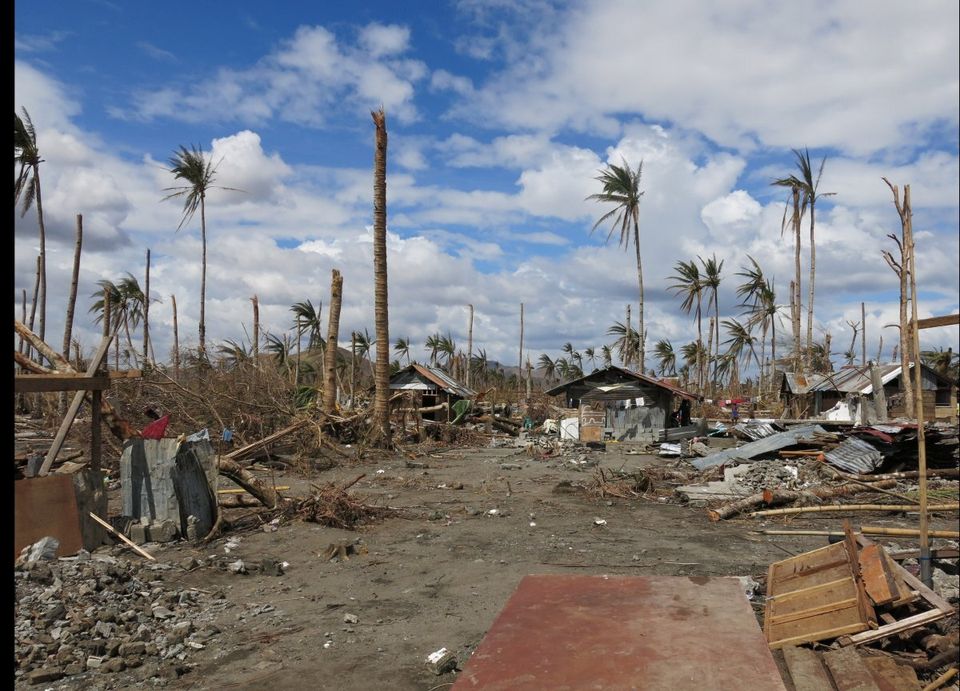When typhoon Haiyan ravaged the Philippines last November, leaving more than 6,000 dead and four million homeless, Canadians smashed open their piggy banks, baked and sold oatmeal cookies and wrote big cheques to help families in shattered cities a world away. Within two days of the disaster, the Canadian government announced it would match the funds donated by Canadians. The response caused a huge surge in donations.
From Haiti to the Philippines, matching government donations have become the golden carrot of Canadian humanitarianism -- the tool for inspiring the already legendary generosity of Canadians when global emergencies arise. Essentially, they let Canadians give twice: first with our donations, then with our tax dollars, from which the government gets the funds to match.
What many Canadians may not realize is that charities don't necessarily get the matched funds from their donors. The government doles them out. And it's difficult for a researcher, let alone the average Canadian, to find out what happens to these matching funds and who benefits.
As the fourth anniversary of the Haiti earthquake passed last month, we thought of the millions donated by hardworking Canadians -- and the money we ourselves donated -- and we again wondered what had been achieved with the matching funds that went to help the three million Haitians who lost homes, schools, hospitals and livelihoods.
We could find no government press release or news story stating when the money had all been given out, and to whom. So one of our team contacted the office of Christian Paradis, the Minister of International Development, to ask. To their credit, they responded quickly, telling us that almost $238 million in donations to the Haiti relief efforts had been eligible for matching funds and as of March 31, 2013, all that money had been distributed.
They sent us a complete list of every organization that had received a portion of the matching funds.
We're happy to share with Canadians that 41 organizations received money for relief and reconstruction projects in Haiti through the matching funds. Twenty-eight of them received more than one million dollars, and the highest amount given was $28 million to the World Food Program. Interestingly, 51 per cent of Canadian matching funds -- more than $120 million -- went to international organizations such as the World Food Program and other United Nations agencies.
We wanted to see how these organizations had spent Canadians' money. Or more specifically, how have the Haitians we wanted to help, benefited?
Minister Paradis' staff pointed us to the "project browser," which Canadians can find on the website of the Department of Foreign Affairs. This browser lets you look up development projects anywhere in the world directly supported by Canadian money. The browser tells you how much an organization received, and how it plans to spend that money within what timeline.
There is little to say whether they are delivering what they promised. We looked through many projects in the browser, but only found one that had any progress reports.
Canada gave the International Organization for Migration $19 million to help 16,000 families get out of the crowded temporary camps by March 31, 2015. Are they on track to meet that goal? The website doesn't tell Canadians.
The UN Office for Project Services got $13 million from Canadian matching funds to train midwives, set up maternity clinics, and support the construction of a new hospital in Gonaïves by this fall. How many midwives have been trained so far? Will the hospital open on schedule, properly staffed and supplied?
Canadians, meanwhile, have given $35 million to help survivors in the Philippines. And according to the Foreign Affairs web site, the matching funds will again be handed out at the discretion of the government. Before the government starts doling the dosh, it's an ideal time to have a conversation about the future of matching funds.
Many Canadians we speak to think their matching funds go to the charity they originally donated to. So that misconception needs to be cleared up by the government. And Canadians need to be given a chance to weigh in on what happens to the matching funds.
Canadian charities are working harder at consistently reporting back to their donors about how they use their funds, whether it is kids with jars of pennies or six-digit donors. Donors increasingly expect this reporting and transparency. The government must learn from that and step up their information game. Canadians should be able to look at how their money was spent, and decide if they were satisfied. To do that, they need information that is not readily available now.
Matching funds have proven to be a brilliant way to inspire generosity in times of need. But they will only work as long as Canadians trust their money is being used wisely.
Out of respect for those who have suffered in these tragedies, and the Canadians donors who want to help them, Canada needs to do a better job of showing accountability for what happens to the matching funds.
Craig and Marc Kielburger are co-founders of international charity and educational partner, Free The Children. Its youth empowerment event, We Day, is in 11 cities across North America this year, inspiring more than 160,000 attendees from over 4,000 schools. For more information, visit www.weday.com.
